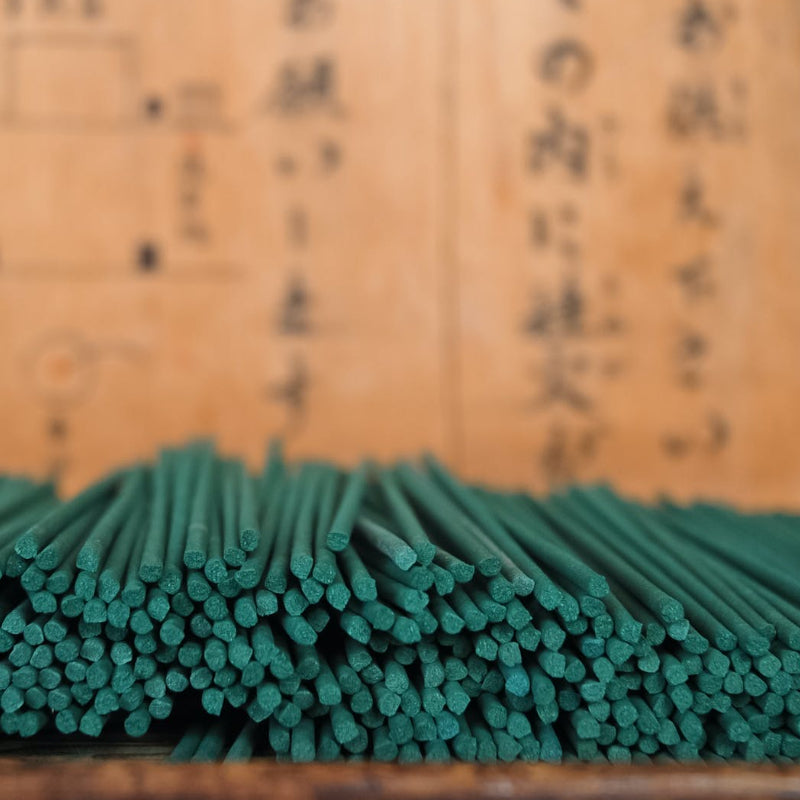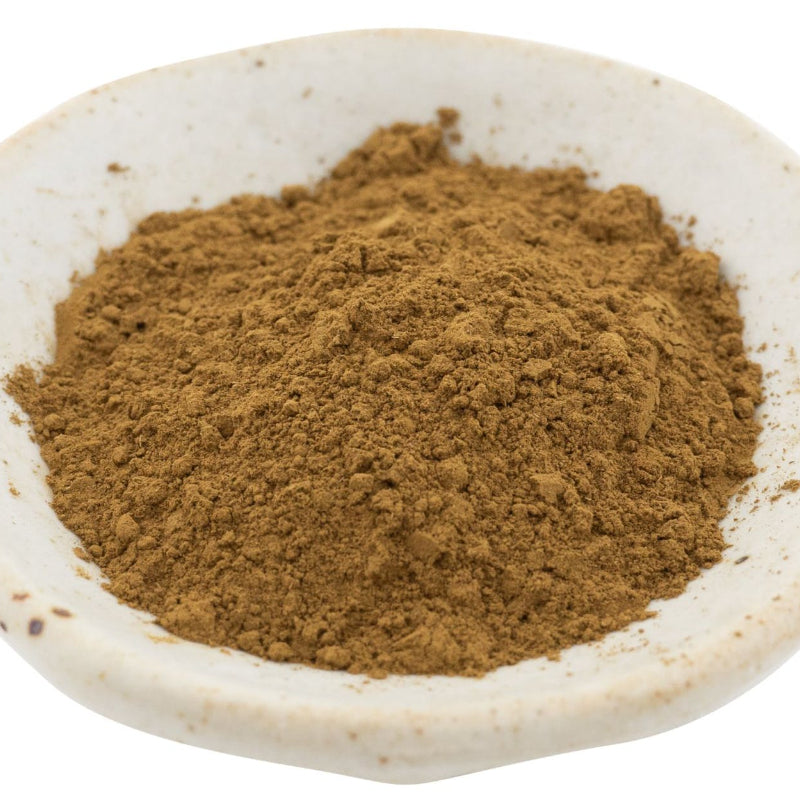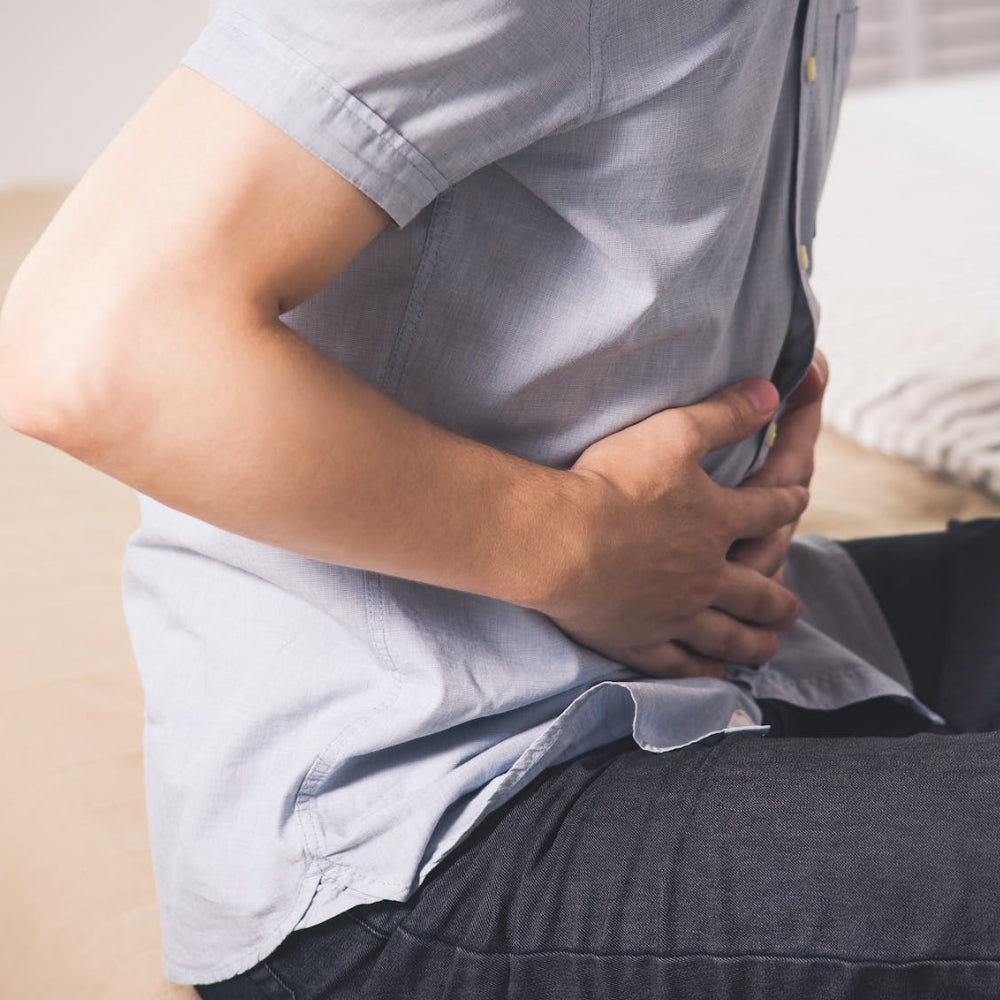Hojicha Powder
UNLEASH HOJICHA JAPANESE ROASTED GREEN TEA MAGIC IN EVERY RECIPE.
Hojicha powder has all the unique palate-pleasing versatility and health benefits of Matcha, but until recently it’s been largely unheard of outside of Japan - where it’s been a household secret since its inception just over 100 years ago. Today Japanese Hojicha powder is growing in popularity across the world, a reputation that started to grow when Western influencers picked up on its use in Japan as a delicious alternative to coffee-based lattes. From that original use, its reputation and versatility as a powdered tea - not just as a beverage - has grown exponentially. But while the West rightfully embraces it, one question still needs to be firmly answered...
IS HOJICHA TEA POWDER JUST MATCHA BY ANOTHER NAME?
In the politest way possible that would be, “no!”.
While you may have seen Hojicha green tea described, and even sold, as Black Matcha or Hojicha Matcha the two are very different beasts.
Ok, this much is true: Hojicha Powder, like Matcha, is, a finely ground green tea powder (that said, Hojicha can also come in leaf tea form, unlike Matcha which is only ever a powder - (see our blog here), and preparing either of the expertly-milled wonders for a traditional brew to drink is also pretty much the same deal. For that, both require the same tools. A sieve to eradicate any clumps and a chasen or whisk, ideally a traditional handmade bamboo one, to rapidly mix the powder with the water. And because both are powdered you’re consuming all of the goodness, not just the liquor brewed from the leaves - so a little of either goes a long way.
Finally - generally amazing healthy properties aside - both have a range of talents beyond the cup as excellent ingredients, seasonings, and garnishes in a range of cooking and baking recipes.
But at that point in the journey, Matcha and Hojicha go their separate ways.
WHAT DOES HOJICHA POWDER LOOK LIKE?
You’ll be able to tell powdered Hojicha from Matcha immediately; Matcha powder is green, to the point of fluorescence, because only the youngest, most verdant, shade-grown leaves are used to make it.
Hojicha powder is made from very finely ground green tea leaves, stems, and twigs of Sencha and Kukicha green teas, is roasted over charcoal immediately after harvesting and sorting, which gives the Hojicha a hue that ranges from chestnut-brown to caramel.
HOJICHA POWDER’S UNIQUE AROMA
The next thing you’ll notice is how Hojicha goes to work on your other senses; the powder has a truly memorable fragrance that acts as a warm, comforting overture to drinking or cooking with the tea. This melody of toasty, nutty, and subtly caramelized notes was written during the roasting process that took place directly after harvesting.
Roasting the just plucked Japanese green tea over charcoals kick-starts what’s known as Maillard reactions which, in turn, cause aromatic compounds called pyrazines to form - it’s these that are responsible for that rich, dreamy smell and naturally sweet taste.
The toasty aroma, reminiscent of roasted nuts, creates a comforting and inviting atmosphere, while a subtle toffee undertone adds a touch of sweetness to an olfactory experience that many find soothing and comforting.
WHAT DOES HOJICHA POWDER TASTE LIKE?
Hojicha has a uniquely different, taste profile, from Matcha.
As the reddish-brown colouring of the finely milled roasted tea stalks and leaves might suggest, it’s full of warm, nutty verging-on-chocolatey surprises with a sweeter vibe to other green teas, especially Matcha. The taste peaks then slowly fade on the tastebuds with a wonderfully enigmatic Umami tingle.
IS HOJICHA POWDER GOOD FOR YOU?
As a straightforward Japanese tea, Hojicha Powder has zero calories, but whether you drink it or cook with it, Hojicha Powder contains L-Theanine the famous stress-busting compound common to many Japanese green teas (most famously Matcha) and packs an arsenal of catechins polyphenols and vitamins A, C, and E to defend the immune system and promote heart health.
But, if that’s not enough, where it comes into its own in the pantheon of Japanese Green Tea is that...
HOJICHA POWDER IS LOW IN CAFFEINE
If you’re new to Hojicha (welcome aboard, by the way!) a difference you won’t taste, but will certainly feel, is the much-reduced levels of caffeine compared to Matcha. That’s the reason it’s one of the most popular evening beverages in Japan.
Again, it’s the roasting process at the root of this; the heat effectively diminishes some of the caffeine present in the leaves, resulting in a tea that is both calming and gentle on the nervous system. This aspect makes Hojicha an appealing choice for those seeking a green tea with a milder stimulant effect, particularly when contrasted with the higher caffeine levels typically found in Matcha. If matcha is your daily wake-up call - perfect for a bleary-eyed beverage without the ensuing jitters and crash of coffee - then a cup of naturally low caffeine Hojicha towards the end of the day is a great way to wind down for the night.
HOJICHA POWDER IS LOW ON TANNINS, TOO.
Every type of tea contains natural tannins, and if you’ve ever brewed matcha with boiling water alone, you likely experienced some astringency due to these tannins. The unique charcoal roasting method employed in the production of Hojicha plays a crucial role in altering these tannins, along with reducing the caffeine content. If you’re not personally keen on the unadorned taste of matcha, the sweeter and roastier notes of Hojicha offer a compelling alternative. Furthermore, the enhanced depth of flavor in Hojicha makes it a seamless transition for coffee enthusiasts seeking a different but equally satisfying experience.
HOJICHA POWDER IS DELICIOUSLY VERSATILE
Hojicha Powder is a first-class alternative for matcha, cocoa, and coffee in your preferred recipes. We have an ever-growing range of Matcha focussed cooking recipes on the Ocha & Co all of which can be swapped out for Hojicha powder - many of them not requiring as much additional sugar because Hojicha has its own sweetness locked in.
Hojicha powder’s finely ground form facilitates the infusion of Japanese roasted green tea flavor into a range of delectable treats, including cookies, brownies, mochi, cheesecake, and various baked goods.
As an ingredient it doesn’t need to be steeped, the powder can be incorporated straight into dishes that don’t involve water.
And while Hojicha Powder is commonly employed in sweet desserts and beverages, its rich, roasted green tea essence also complements savory recipes. It pairs exceptionally well with flavors like maple syrup, chocolate, matcha, black sesame, sweet potato, fig, caramel, and vanilla, enhancing the culinary possibilities beyond the realm of sweets.
Hojicha Powder’s fame as a go-to ‘secret’ ingredient is rapidly spreading outside of Japan - a reputation that started when tea lovers worldwide began to swoon with every sip of a modern classic - the Hojicha Latte. If you’ve never tried one, why not have a go at Ocha & Co’s own recipe (and feel free to claim it as your own, it’s a ‘secret’ made to be shared!)
HOW TO MAKE OCHA & CO.’s ORGANIC HOJICHA POWDER LATTE
Ingredients
- 2 tsp Ocha & Co JAPANESE ORGANIC HOJICHA POWDER
- Some hot water
- 1 cup milk (if you consume dairy, then full-fat milk, or even extra creamy ‘Jersey’ milk is a sensational lip-licking partner to the Hojicha powder. That said whisked oat milk is just as delicious and adds a subtle new flavor note to the drink.)
1. Sift 2 teaspoons of Ocha & Co Organic Hojicha powder into your favorite cup or tea bowl, making sure to get rid of any clumping. You can use your tea scoop or a regular teaspoon to push some of the powder through the sieve.
(NOTE: If this was to make Matcha lattes we’d suggest you add a little sugar or syrup - to your taste - into the powder, before adding the water, to offset the natural earthy astringency of the tea. But Hojicha powder already has a completely natural, sweet, chocolatey/caramel underscore that’s been brought about by the roasting process. Give it a try without any sweet additions first and see what you think - you can always add to it later.)
2. Add a small amount of hot water into the cup, just enough to make a thick mixture. For the best fragrance and flavor, make sure the water is not boiling (about 90Cº).
3. Mix well until smooth. You can use a chasen bamboo whisk, or a regular teaspoon for this step. Set aside.
4. In a saucepan, warm up the milk/dairy alternative slowly over low heat. Stir every so often and make sure that it doesn’t boil.
If you have a milk frother, you can use it to froth up the milk and give it a nice foamy texture, but this step is optional.
Pour the milk carefully into the cup. The concentrated Hojicha will mix easily with milk. Add a little dusting of Hojicha powder on top to finish it off. Enjoy your tasty matcha latte!
There’s no limit to what you can add to Hojicha lattes and kick that flavor and aroma experience up a few notches. Give yourself free rein to experiment with different flavors and combinations such as whipped cream floats, chocolate shavings, or even Boba or tapioca pearls and you might just discover a new go-to classic for the whole family.
PS: For an iced Hojicha latte…
This iced version of the Hojicha latte is wonderfully refreshing and tastes just as great! To make it pour the Hojicha Powder and water paste into a tall glass, add cold milk/dairy alternative, and top up with ice cubes. Delicious.
_optimize.jpg)



